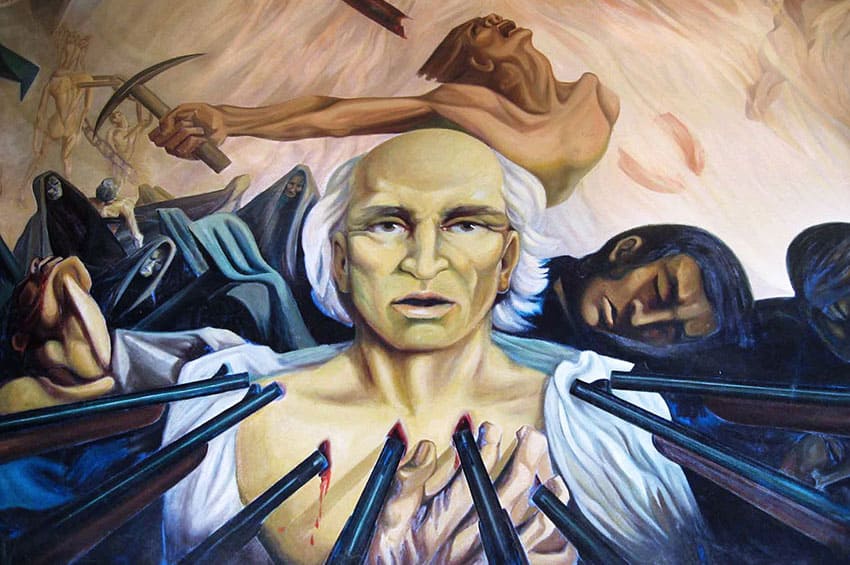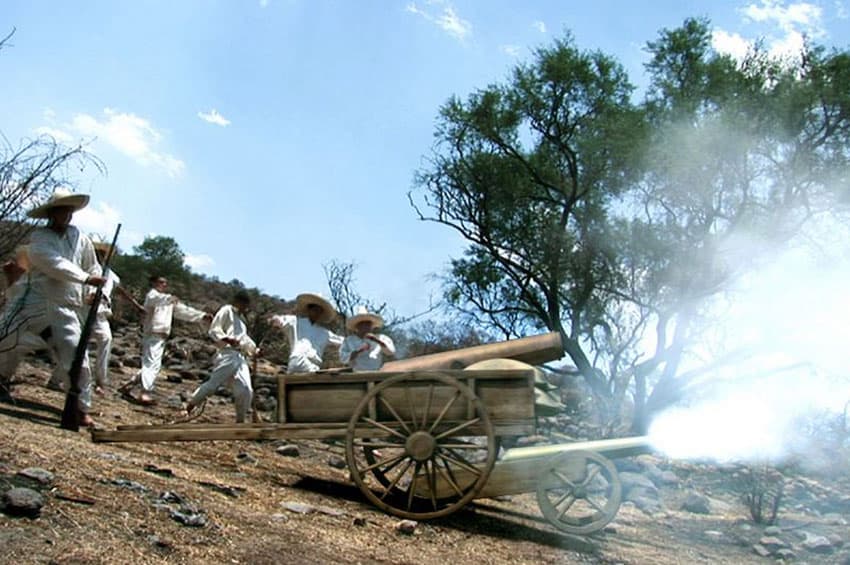In the 17th century, anyone heading east from the city of Guadalajara would soon come to one of the most strategic points along the ancient Camino Real: the massive bridge over the Calderón river.
In 1811 this bridge was the site of an important battle for Mexican Independence. Father Miguel Hidalgo had only recently launched the rebellion against Spain and now at the Puente de Calderón he would face an army of 6,000 royalists. However, the history books tell us that Hidalgo had as many as 100,000 fellow rebels with him: how could he possibly lose?
Well, lose he did, but before getting into that, it’s important to understand why Hidalgo and many others wanted independence. Whereas some countries like Britain and France treated their far-off colonists relatively well, Spain had set up a bizarre system of class discrimination backed by rigid laws.
Spaniards born in Spain were at the top of the pyramid and indigenous people — many of them enslaved — were at the bottom. In between were meztizos (a mixture of the two) and criollos, children of Spaniards who were born not in Spain, but in the new world. Spain’s harsh laws for Mexico stipulated, for example, that only Spaniards born in Spain could carry arms, ride a horse or become a lawyer or a college teacher.
Most people in Mexico were confined to “vile occupations” and were obliged by law to dress in white shirts and trousers, straw hats and sandals. On top of this, anyone not born in Spain was obliged to pay a “head tax” simply for being an Indian, meztizo or criollo.

So it is easy to see how Hidalgo had accumulated an “army” of between 80,000 and 100,000 bodies. He had, after all, declared war on the gachupines (contemptuous term for Spaniards) in his Grito or Shout for Liberty on September 16 and had issued a decree abolishing slavery and the head tax on December 6.
Now, on January 16, 1811, he had promised, according to Diana Serra Cary of Historynet, that the following day he would “breakfast in Guadalajara, dine at the Bridge of Calderón and sup in Mexico City!”
Although he had 95 cannons, most of Hidalgo’s so-called troops were armed with nothing more than lances, wooden swords, farm tools and slings which Hidalgo himself had taught them how to make and use.
The next day, January 17, the rebels, under the command of Ignacio Allende, were massed on the south side of the river and the royalists, led by General Felix Calleja on the north.
Curiously, in Western Mexico, a Traveler’s Treasury, writer Tony Burton says that the very opposite orientation is shown on the plan of the battleground depicted in hundreds of textbooks and museums around the country, where the north arrow points directly south, despite the fact that “a copy of the corrected map was supplied to the Guadalajara museum (by Burton) as long ago as 1988.”
The battle raged for six hours and then artillery fire (some say a grenade) hit one of the independence fighters’ ammunition wagons. This blew up in a tremendous explosion, which set the dry brush in the area on fire. The blast and blazes spooked the untrained rebel army and they ran for their lives, with the Spaniards right behind them, of course.

As it says in an inscription on the bridge, “The father of the country, Don Miguel Hidalgo . . . ran into bad luck at this spot on January 17, 1811.”
Bad luck indeed. Allende, furious over the outcome of the battle, actually took Hidalgo prisoner and tried to head for the United States, hoping for help from President James Madison, but both rebel leaders were caught by the royalists en route, executed and beheaded.
It appears that Hidalgo, at age 58, was killed by a firing squad. It is said that his last words were “”Though I may die, I shall be remembered forever; you all will soon be forgotten!”
If you go to visit the Calderón Bridge you can mull over these fleeting, fascinating moments of history while you wander about the surrounding ecopark, which covers 140,000 square meters and features roofed picnic tables, grills, toilets, snack bar, a giant artificial waterfall, an adrenaline-raising hanging bridge, five zip lines totalling 711 meters in length, a small lake with boats and several kilometers of footpaths.
If walking around the place heats you up, you can cool off simply by standing in the spray of two giant water jets in the river, commemorating Mexico’s bicentennial.
While cooling off, think about this: considering that it cost millions of pesos to build and furnish this ecopark, it just might be the world’s biggest monument to a victory by the enemy. Talk about openmindedness — ¡Viva México!
[soliloquy id="89533"]
In addition to being a historical monument, Puente Calderón could also be called the gateway to Los Altos, located in the northeastern “finger” of the strangely shaped state of Jalisco. It’s called Los Altos because the altitude is typically over 1,800 meters (1.12 miles) above sea level.
The ecosystem there is rather unique: mostly flat grassland, but just about the time you’re ready to pronounce it “boring,” you discover that this prairie land is cut by the deep and dramatically beautiful 150-kilometer-long Río Verde Canyon, dotted with majestic waterfalls and numerous hot springs.
If the canyon is not enough, you can also find extensive archaeological ruins at Teocaltitán and some 850 “horizontal petroglyphs” at Presa de la Luz. As for food, highlanders pride themselves on their tasty carnitas, and to wash down the meat, visitors can take their pick of locally produced tequilas which some say are Mexico’s best, thanks to the red, iron-rich soil of the grasslands.
The Calderón Bridge Ecopark is located 23 kilometers east of Guadalajara and is open 7:00am to 7:00pm, with an entrance fee of only 10 pesos. To get there, point your navigator at “Puente de Calderón Ecologico Park.” Since it may have as many as 5,000 visitors on Sundays, I suggest you enjoy the place on a weekday.
The writer has lived near Guadalajara, Jalisco, for more than 30 years and is the author of A Guide to West Mexico’s Guachimontones and Surrounding Area and co-author of Outdoors in Western Mexico. More of his writing can be found on his website.
